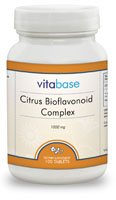| Quercetin is effective in the treatment and prevention of many disorders, from asthma to cancer to heart disease.
Quercetin have antioxidant, anti-inflammatory, antivral, immunomodulatory, anticancer and gastroprotective activities. Quercetin blocks an enzyme that leads to accumulation of sorbitol, which has been linked to nerve, eye, and kidney damage in those with diabetes.
Quercetin possesses potent antioxidant properties. It protects LDL cholesterol from becoming damaged. Quercetin prevents damage to blood vessels by certain forms of cholesterol and other chemicals produced by the body. LDL cholesterol is an underlying cause of heart disease. Quercetin also works as an antioxidant by scavenging damaging particles in the body known as free radicals. People with diabetes are at higher risk of blood vessel damage from free radicals. Quercetin may reduce the risks of certain cancers developing.
Quercetin acts as an antihistamine and has anti-inflammatory properties. Quercetin inhibits some inflammatory enzymes, such as lipid peroxidases, and decreases leukotriene formation. Quercetin opposes the actions of the histamines in the body. Histamines are responsible for allergic and inflammatory reactions. It can help reduce the inflammation that results from hay fever, allergies, bursitis, gout, arthritis, and asthma. It may lessen other asthma symptoms.
| 